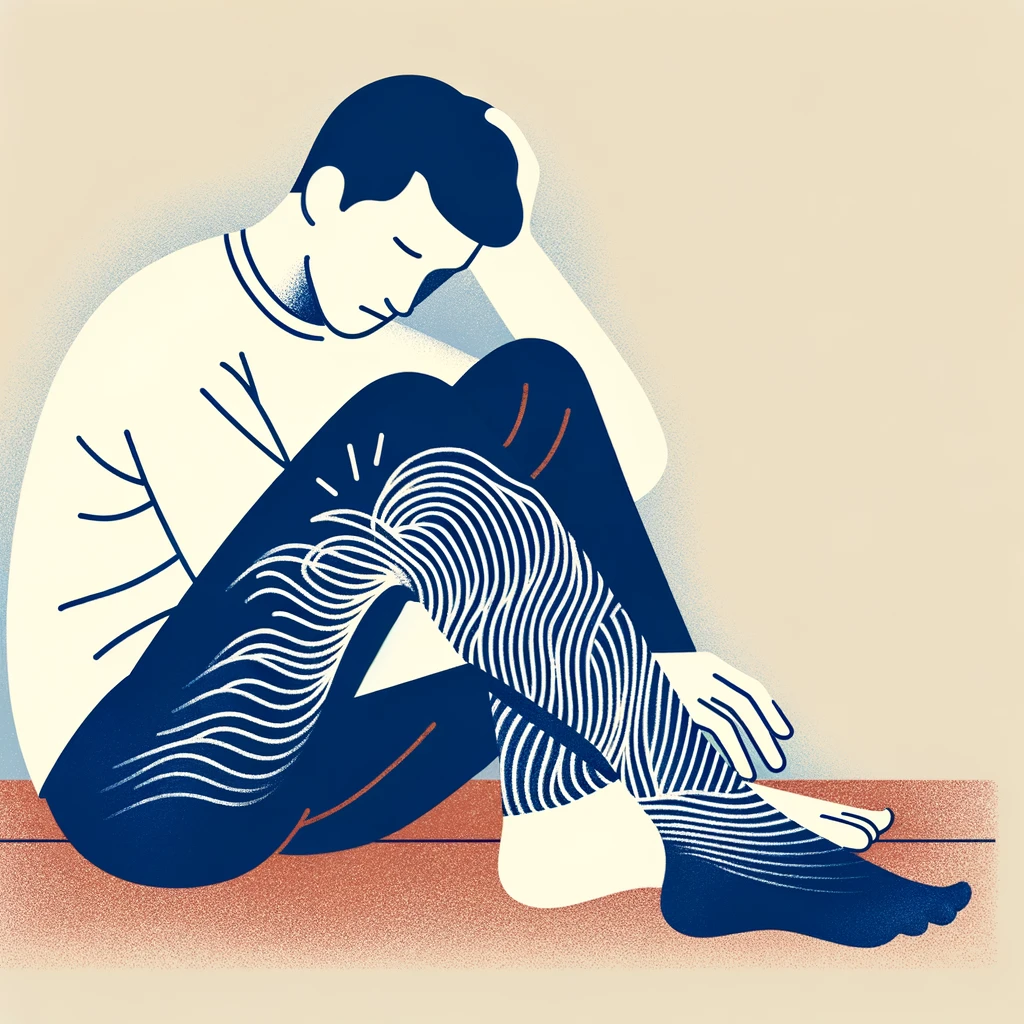Restless Leg Syndrome: A Comprehensive Exploration

Dr. Craig Smith, MD
4 Min read
Restless Leg Syndrome (RLS) is a neurological disorder that affects a significant portion of the global population. Characterized by an irresistible urge to move the legs, often accompanied by uncomfortable sensations, RLS can have a substantial impact on an individual's quality of life. In this comprehensive article, we will delve into the statistics, facts, causes, symptoms, treatments, medications, prognosis, co-morbidities, diagnosis, coping strategies, pediatric RLS, and ongoing research associated with Restless Leg Syndrome.
Statistics: Restless Leg Syndrome is more prevalent than one might think. According to the National Institute of Neurological Disorders and Stroke (NINDS), approximately 7-10% of the population in the United States suffers from RLS. This translates to millions of individuals grappling with the challenges posed by this often-misunderstood condition.
Facts about Restless Leg Syndrome: Age and Gender: RLS can affect individuals of any age, but it tends to be more common in middle-aged and older adults. Additionally, women are more likely to experience RLS than men. Heredity: There is a significant genetic component associated with RLS. If a close family member has the condition, the likelihood of developing it increases. Worsening Symptoms at Night: RLS symptoms typically worsen during the evening and night, leading to difficulties falling asleep and staying asleep. This can result in sleep deprivation, further exacerbating the impact on one's well-being.
Causes of Restless Leg Syndrome: The exact cause of Restless Leg Syndrome remains elusive, but several factors may contribute to its development: Genetics: As mentioned earlier, a family history of RLS increases the risk of developing the condition. Specific genes associated with RLS have been identified. Iron Deficiency: Disruptions in iron metabolism are linked to RLS. Iron is crucial for dopamine production, and alterations in dopamine levels are believed to play a role in the development of RLS symptoms. Pregnancy: RLS is more common during pregnancy, particularly in the third trimester. Hormonal changes and increased blood volume may contribute to the onset of symptoms. Chronic Diseases: Certain chronic conditions, such as kidney failure, diabetes, and peripheral neuropathy, are associated with a higher risk of developing RLS.
Symptoms of Restless Leg Syndrome: The hallmark symptoms of Restless Leg Syndrome include: Unpleasant Sensations: Individuals with RLS often describe uncomfortable sensations in their legs, such as tingling, crawling, or aching. Urge to Move Legs: The discomfort prompts a strong, uncontrollable urge to move the legs. This movement provides temporary relief from the sensations. Worsening in the Evening/Night: Symptoms tend to intensify during periods of rest or inactivity, particularly in the evening and at night. Sleep Disturbances: The restlessness and discomfort can significantly disrupt sleep patterns, leading to insomnia and daytime fatigue.
Treatments for Restless Leg Syndrome: While there is no cure for RLS, various treatment approaches aim to manage symptoms and improve the overall quality of life for individuals affected by the condition: Lifestyle Modifications: Certain lifestyle changes can alleviate RLS symptoms. These include regular exercise, maintaining a consistent sleep schedule, and avoiding substances like caffeine and nicotine that may exacerbate symptoms. Iron Supplementation: For individuals with iron deficiency, iron supplements may be recommended to restore normal iron levels and alleviate RLS symptoms. Medications: Several medications are available to manage RLS symptoms. These may include dopaminergic agents, benzodiazepines, and anticonvulsants. However, it's essential to work closely with a healthcare provider to determine the most suitable medication and dosage. Massage and Heat/Cold Therapy: Some individuals find relief from RLS symptoms through massage and alternating between warm and cold compresses on the affected limbs.
Prognosis: The prognosis for individuals with Restless Leg Syndrome varies. While RLS is a chronic condition, its severity can fluctuate over time. With appropriate management and lifestyle adjustments, many people with RLS can lead relatively normal lives. However, the unpredictable nature of the disorder and its impact on sleep may contribute to ongoing challenges for some individuals.
Co-morbidities and Associated Conditions: Mental Health Implications: Individuals with RLS may be more susceptible to mental health challenges, such as depression and anxiety, due to the impact of disrupted sleep patterns on overall well-being. Impact on Quality of Life: Expanding on how RLS affects daily activities and the overall quality of life, including work performance, social interactions, and relationships, provides a more comprehensive perspective.
Diagnosis: Clinical Evaluation: Describe the diagnostic process, which often involves a thorough clinical evaluation of symptoms, medical history, and sometimes the use of diagnostic criteria like the International Restless Legs Syndrome Study Group criteria. Sleep Studies: In some cases, sleep studies (polysomnography) may be conducted to assess the severity of sleep disruption and rule out other sleep disorders.
Coping Strategies: Support Groups: Acknowledge the importance of support groups and online communities where individuals with RLS can share experiences, coping strategies, and emotional support. Cognitive Behavioral Therapy (CBT): Mention the potential benefits of cognitive-behavioral therapy, which can help individuals manage the psychological aspects of living with a chronic condition like RLS.
Pediatric RLS: Include a brief section on Pediatric RLS, emphasizing its unique characteristics and considerations when diagnosing and managing the condition in children.
Ongoing Research: Advancements in Treatment: Highlight any recent advancements in RLS research, such as new medications, therapeutic approaches, or emerging technologies that show promise in managing symptoms. Genetic Studies: Provide information on ongoing genetic studies and how they contribute to a better understanding of the hereditary aspects of RLS.
Conclusion: Restless Leg Syndrome is a prevalent neurological disorder that significantly affects the lives of millions of individuals worldwide. Understanding the statistics, facts, causes, symptoms, treatments, medications, prognosis, co-morbidities, diagnosis, coping strategies, pediatric RLS, and ongoing research associated with RLS is crucial for both those living with the condition and their healthcare providers. By raising awareness and fostering ongoing research, we can continue to improve our knowledge of RLS and enhance the quality of life for those impacted by this often-overlooked disorder.